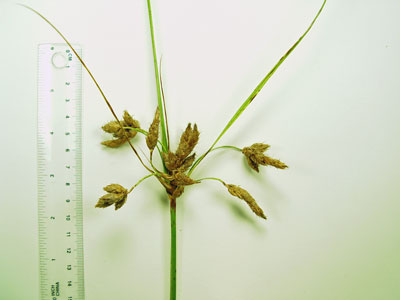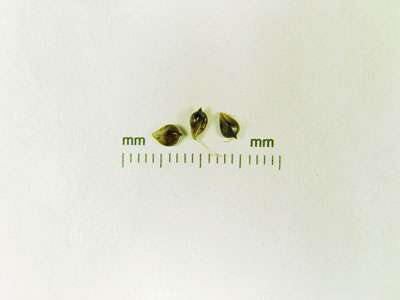DACF Home → Bureaus & Programs → Maine Natural Areas Program → Communities, Plants, and Animals → Rare Plants → Bolboschoenus novae-angiae
Bolboschoenus novae-angliae (Britt.) S.G. Smith
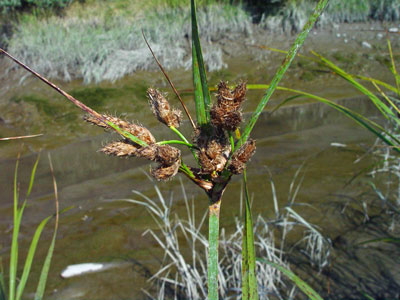
Marsh Bulrush
- State Rank: S1
- Global Rank: G3
- State Status: Endangered
Habitat: Slightly brackish coastal shores, estuaries, marshes. [Tidal wetland (non-forested wetland)]
Range: Atlantic coast from Maine to Virginia.
Aids to Identification: Identification of Bolboschoenus is difficult and is based on technical characteristics. Marsh bulrush is believed to be of hybrid origin between B. fluviatilis and B. robustus, thus shares characteristics intermediate of the two. Marsh bulrush has medium to dark orange brown spikelets not exceeding 8 cm. The floral scales are nearly opaque. Perianth bristles are weakly attached to the shed achene (In B. robustus, the bristles are not persistent on the shed achene and in B. fluviatilis, the bristles are tightly attached to shed achenes). Achene color varies from dark to medium brown. The surface of the achene is glossy with dull patches. When placed in water, some achenes will float and others will sink (B. fluviatilis will sink and B. robustus will float). Examination of several achenes is critical for proper identification.
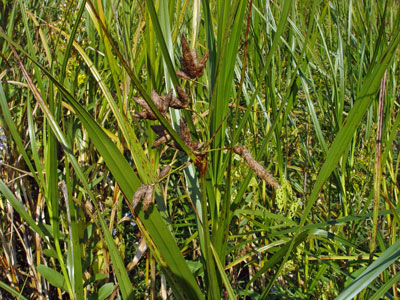
Ecological characteristics: Possibly of hybrid origin. Ecological relationships not fully understood. Found in only a few brackish tidal marshes.
Phenology: Fruiting in mid July through October.
Family: Cyperaceae
Synonyms: Schoenoplectus novae-angliae (Britt.) M.T. Strong; Scirpus cylindricus (Torr.) Britt.; Scirpus novae-angliae Britt.
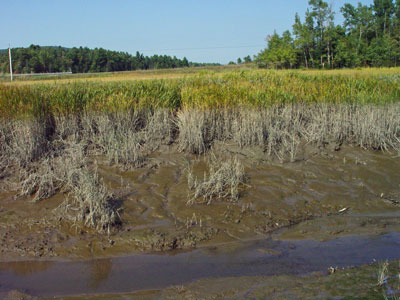
Known Distribution in Maine: This rare plant has been documented from a total of 6 towns in the following county: Cumberland, Sagadahoc, Waldo.
Reason(s) for rarity: Habitat is scarce.
Conservation considerations: Alteration of hydrology to brackish shores and marshes may be detrimental to populations.
